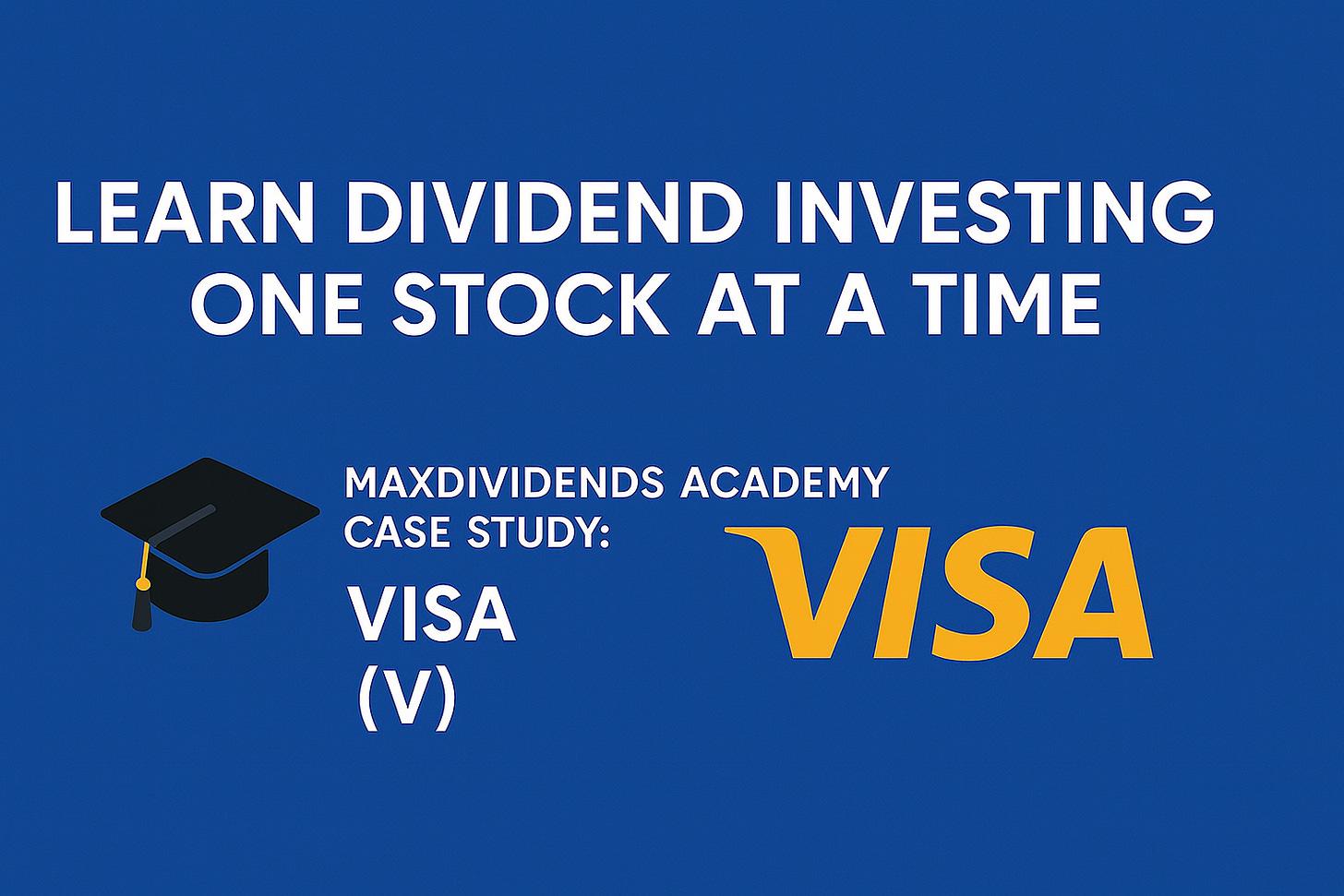🎓 MaxDividends Academy Case Study: Visa Inc (V)
A step-by-step company analysis that teaches you how to apply the MaxDividends strategy in real life.
MaxDividends Mission: Helping people build growing passive income, retire early, and live off dividends.
This series is part of the MaxDividends Academy — where we teach our proven secret Five-Pillar Formula in practice. Each lesson breaks down a real company, showing how to spot lasting dividend payers and avoid traps, step by step.
⭐️ Your Premium Hub | 🎬 MaxDividends App: 2-Minute Video
Learn Dividend Investing One Stock at a Time
🎓 MaxDividends Academy Case Study: Visa Inc (V)
Hey — Max here 💪
Before we dive in, let me set the stage.
What you’re about to read comes straight from our Premium playbook — the high-conviction, step-by-step breakdowns we use to separate world-class dividend machines from everything else. This is where we stress-test businesses not just for the next quarter, but for the next decade and beyond.
It’s timeless dividend thinking, translated into simple, repeatable steps — the same principles that helped investors build generational wealth with companies like Coca-Cola, Johnson & Johnson, and Procter & Gamble. And today, we’re applying that exact framework to one of the most powerful payment networks on the planet.
In the next Academy issues, we’ll keep exploring standout dividend names — some famous, some still flying under the radar — businesses with the potential to keep paying and raising dividends for the next 30–50 years.
And here’s the key: you’ll see how to evaluate them yourself — not just what to buy, but how to think.
When it comes to quiet compounding power, Visa sits in a league of its own. You don’t see its logo on store shelves the way you see consumer brands — but its rails are everywhere in the background, quietly taking a tiny slice of trillions in global payment volume.
Visa isn’t a bank and it doesn’t lend money. It’s the toll road. Every time a card is swiped, tapped, or used online with a Visa logo on it, there’s a high chance Visa is taking a fee — from merchants, from issuers, or from somewhere along the transaction chain.
This is one of those businesses that shows how powerful a simple, asset-light model can be. No inventory, no factories, no warehouses — just a global network, deep relationships with banks and merchants, and a massive shift from cash to electronic payments working in its favor.
Add in 15+ years of dividend growth, huge free cash flow margins, and one of the strongest balance sheets in corporate America — and you get a textbook example of a long-term dividend compounder.
The real question is:
Does Visa fit my / your plan right now — and if yes, in what role?
In this case study, I’ll show you exactly how I look at Visa, how (and if) it fits into a long-term dividend strategy, and how I move through each step to reach a calm, fact-based conclusion. No guessing, no hype — just the MaxDividends framework in action.
Step by step, you’ll see how we turn a complex global business into a clear “yes/no/when” decision for a real portfolio.
👉 Let’s put Visa (V) through the Five-Pillar Formula and see where it stands today.
Scroll to read — if no access, check your plan and upgrade
Keep reading with a 7-day free trial
Subscribe to Max Dividends to keep reading this post and get 7 days of free access to the full post archives.


